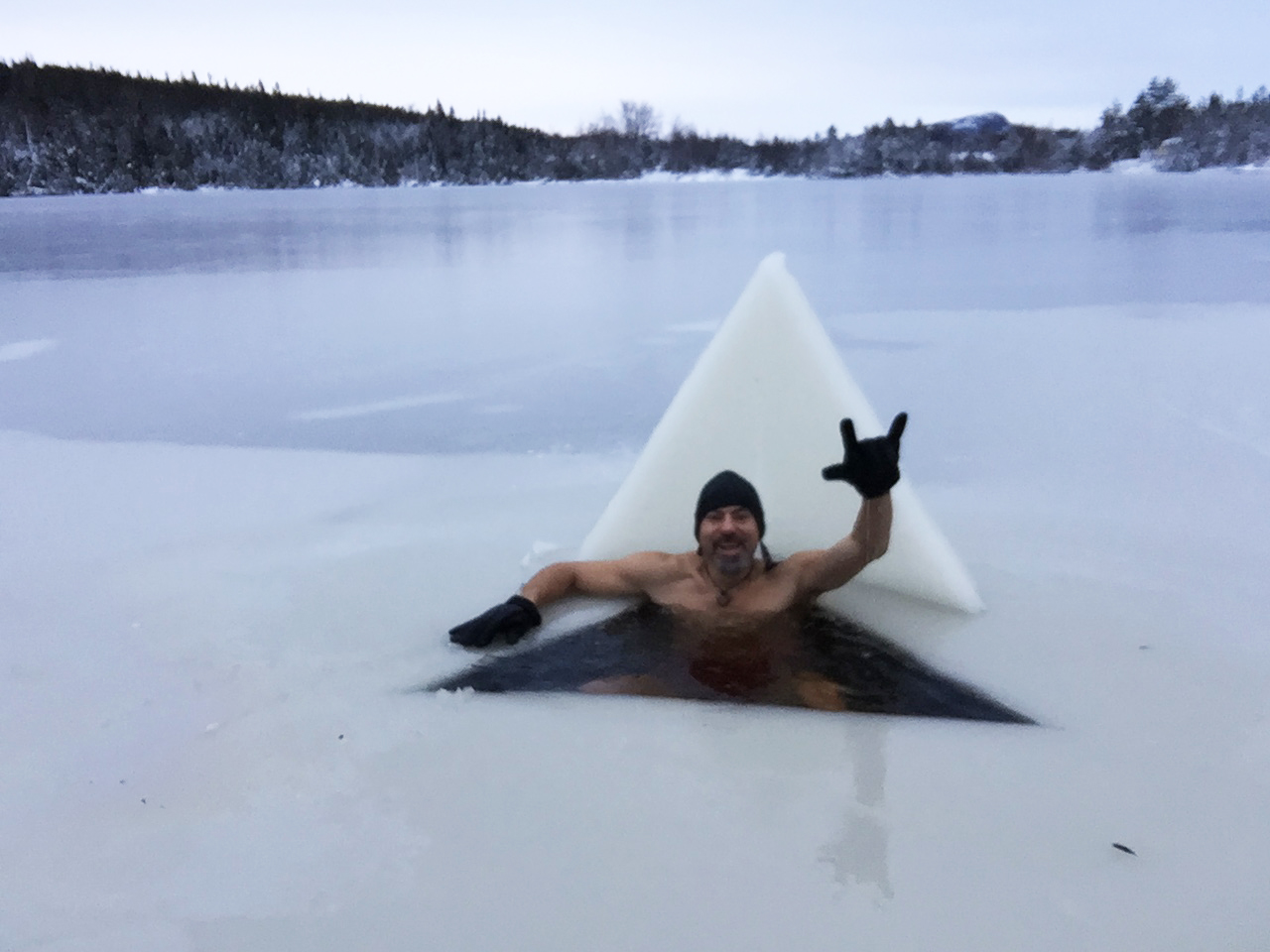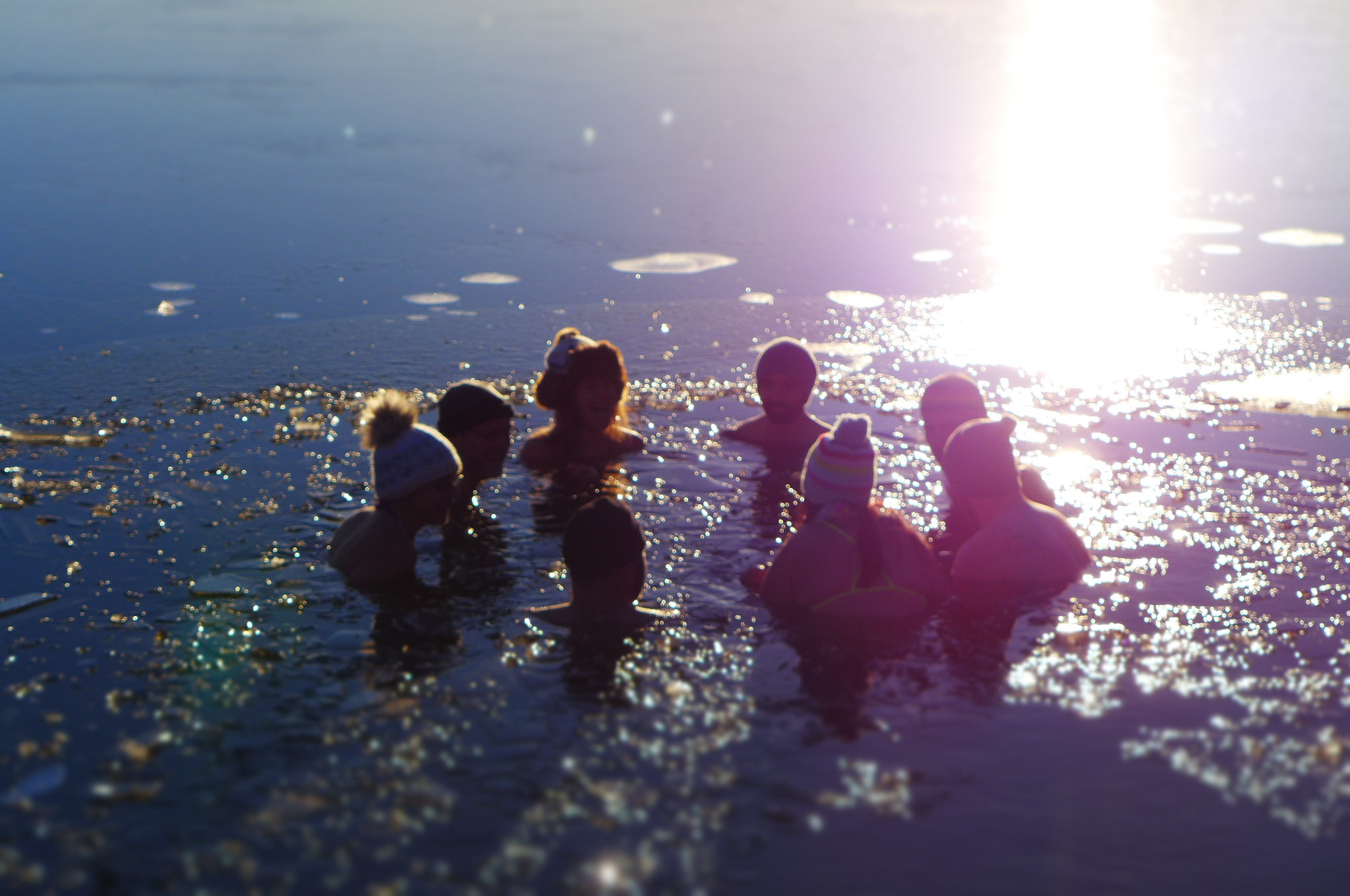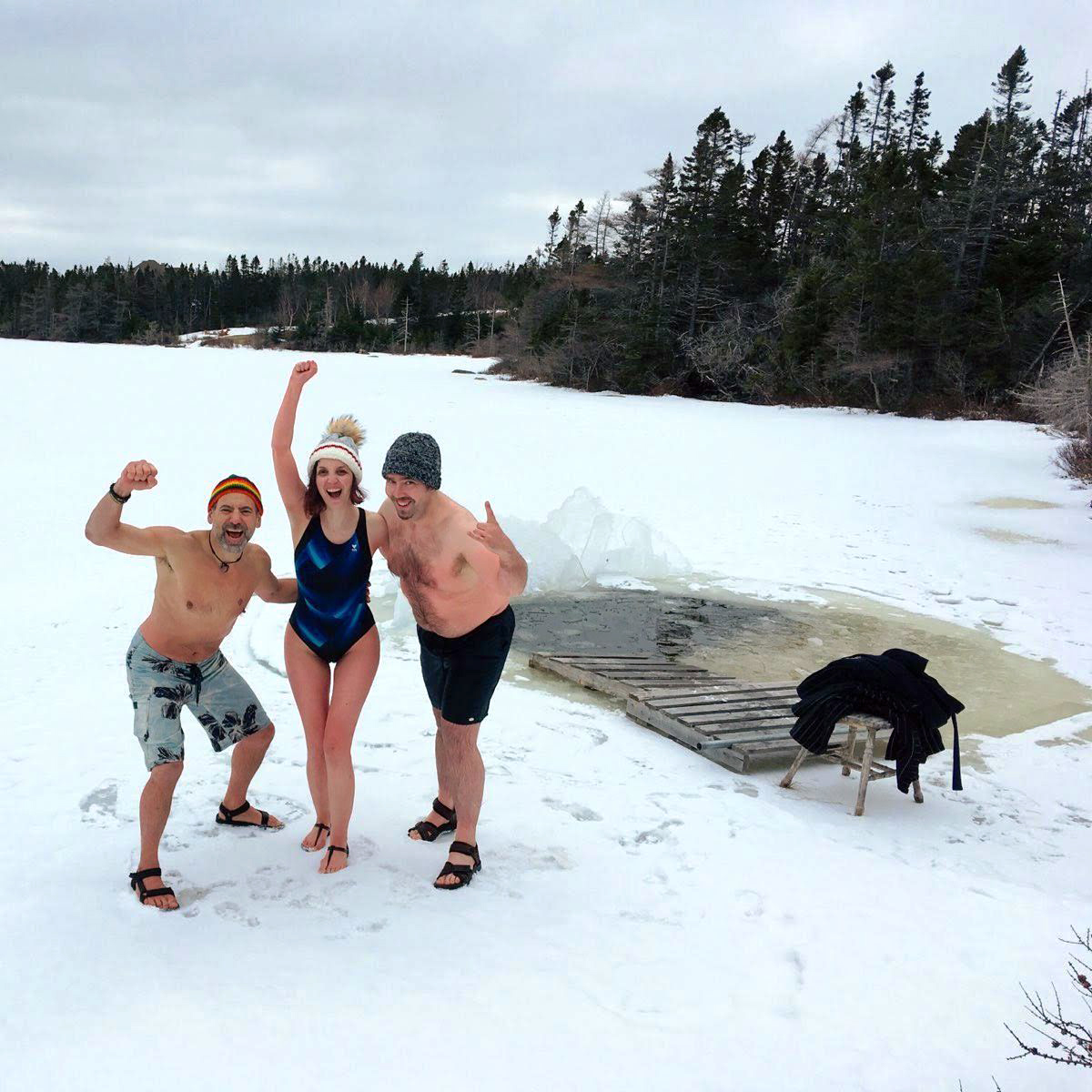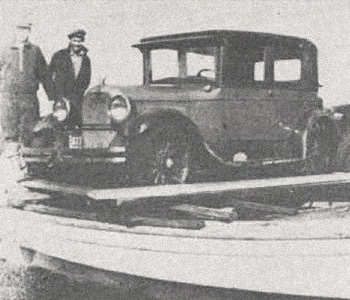Chilling with Brent Beshara
April 2019
As I watch Brent use a broomstick to shatter the layer of ice coating the pond, I feel a pang of terror. What have I gotten myself into?
I’m standing in the snow in sandals and a swimsuit. The air temperature is -5°, and I’m about to ignore my every instinct and plunge into the frigid water of a Newfoundland pond in March.
Then I’ll stay there. Intentionally.
Though this is a serious test of my mettle, it’s routine for Brent Beshara. Every day, come rain, sleet, snow, or hail, he spends five minutes in this pond behind the Holyrood home he shares with his wife, artist Keli-Ann Pye-Beshara. He keeps a hole in the ice open year-round for these daily dips.
“In the beginning,” he says, “I just stood up to my ankles in the pond, and it felt like my feet were on fire.”

Beshara taking a refreshing dip.
Image courtesy of Brent Beshara.
Since then, he has gradually increased the amount of time he’s able to spend in the water. His personal record is 10 minutes and 11 seconds. “You’ve just got to do it. You’ve just got to get in. I wanted to improve, so I started committing. Now this is my third season, and it’s easy for me to walk around with no shirt in -6°, -10°. I’ve walked outside for an hour in -19°.
“Now, the cold is a refreshing experience.”
Brent wasn’t always so hot on the cold. He remembers suffering in frigid ocean waters during his 18 years as a navy diver.
“I froze! And I was in a wetsuit!” he laughs.
Looking at Brent today, it’s difficult to imagine him in the armed forces. Dressed in a rainbow knit toque, leather bracelets, and a black T-shirt emblazoned with an illustration of lungs and the phrase “get high on your own supply”– a reference to breathing exercises – he describes himself as a man who went “from bombs to beliefs.” When he first retired from the military, he took three months off to read, tackling everything from ancient philosophy to modern physics. He also took up yoga, which enabled him to process post-traumatic stress from his military career.
“Yoga saved my life,” he says. “It allowed me to stay present.”
Then Brent heard about a Dutchman named Wim Hof, an extreme athlete who holds 26 Guinness World Records. He’s most famous for his extraordinary cold tolerance, which has earned him the nickname “The Iceman.” He has swum 66 metres under ice, summited Everest in shorts, and run a half-marathon barefoot in the Arctic. In 2011, he shattered his own cold-endurance record by sitting neck-deep in an ice bath for 112 minutes.

Brent Beshara enjoys a sunset from the icy
waters of his pond in Holyrood.
Image courtesy of Brent Beshara.
Inspired, Brent began studying Hof’s system for adapting to extreme temperatures, and he’s recently become a certified Wim Hof Method instructor. Hof’s technique combines gradual cold exposures with breathing exercises and a tenacious mindset, and practitioners credit it with a variety of health benefits, including relief of anxiety, inflammation, and chronic pain.
“The Wim Hof Method is completely the opposite [of yoga],” Brent explains. “In yoga, we learn to slow our breath down to reduce the release of the stress hormones. [In the Wim Hof Method] we’re actually activating the fight-flight response.”
Immersion in cold water is one of the most strenuous things you can do to your body. The precipitous drop in temperature jolts you into survival mode. Adrenaline pours into your system, increasing your heart rate, opening the airways in your lungs, and triggering the release of sugar into your bloodstream.
The theory behind cold therapy is that, by putting our bodies under stress in this controlled way, we can dispel tension in one fell swoop, leaving us calm and focused.
“When we do the breathwork and the cold exposure,” says Brent, “we’re hyper-present, and in that moment, because we’re also in a relaxed state and a safe environment, unprocessed energy can be released.”
Brent has seen the psychological impact this structured experience of stress can have. “People coming out have some serious emotional transformations. Our past is full of stories. We’ve got injuries. We’ve got traumas. If we don’t have the time to deal with those experiences, emotions, and events in the moment, we hang onto them. They get stored in our tissues, they get stored in our fascia, they get stored in our nervous system.
“What we’re doing is energetically dumping [that burden], getting rid of it.”
Researchers are now looking into how gradual cold exposure and the Wim Hof Method might benefit individuals with inflammation, pain, and even autoimmune diseases like spondylitis. It isn’t necessary to break any endurance records to achieve results. According to Brent, 30 seconds to two minutes of regular cold exposure is enough to see positive health effects. “It increases circulation, energy, and pain tolerance, and it helps us improve our focus, our concentration, and our creativity. We overcome our fear of the cold and have better sleep and better recovery times.
“I’ve got chronic back and neck pain, but now I have way more mobility, far less tension in my neck, joints, and tissues. Even though the signal is still there, it’s dulled.
“It’s truly profound.”

Members of the Newfoundland Winter Tribe
doing a cold exposure together.
Image courtesy of Brent Beshara.
Cold exposure isn’t for everyone. Because of the strain it places on the body, immersion can cause a heart attack, so anyone interested in trying it should consult a doctor first. For those who do want to pursue the practice, Brent is passionate about sharing his knowledge.
Back at the pond, he’s waiting for me to take the plunge. The initial shock as we descend into the water is intense. I involuntarily yelp. But, as I slow my breathing, it’s surprising how quickly I become accustomed to the chill. We spend two solid minutes sunk to our shoulders. I can feel small ice pans bumping against my chest and back. When we emerge, I’m left with sunburn-red skin and a tremendous sense of accomplishment. The flush fades but the pride doesn’t.
Next time I’m going to try for two minutes and a half.

Brent Beshara, the author, and the author’s husband, Andrew Hawthorn, after two minutes in the frozen pond.
Image courtesy of Keli-Ann Pye-Beshara.



